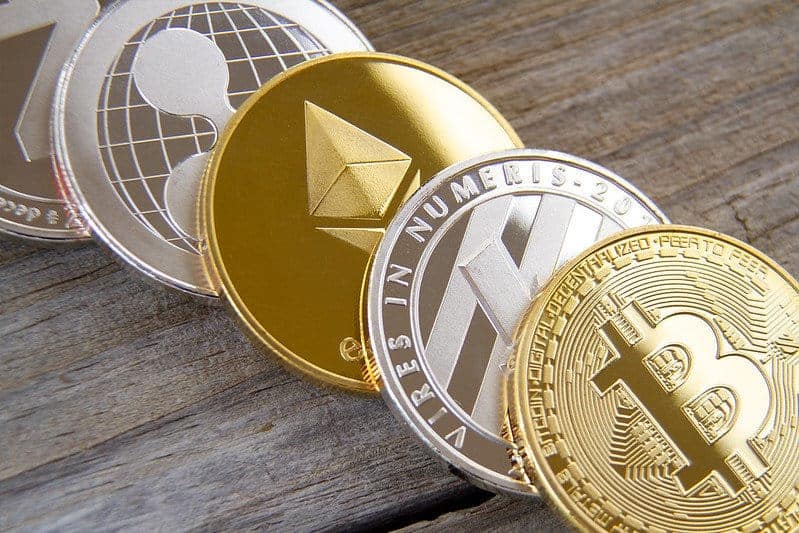Security token offerings (STOs) were supposed to be what brought initial coin offerings (ICOs) in from the cold. While ICOs — which were fraught with scams — embodied the wild west libertarian ethos of the early blockchain days, STOs, which are designed to work with regulators as stakeholders and not adversaries, were supposed to reflect the maturing of the ecosystem.
But STOs didn’t catch on like they were supposed to. For instance: when STOs came into the limelight, Taiwan rushed to create the world’s first STO laws, but overly strict regulation chilled interest. As Jason Hsu, the self-proclaimed Taiwanese “crypto congressman” told Forkast News, there was effectively a failure to launch on the island, and things didn’t look promising. Thailand was also one of the first to launch a framework for STOs, and its local Securities and Exchange Commission approved digital exchanges for the tokens — but its regulator reports that no firms have utilized the laws to raise funds. Singapore, with its reputation for finance-friendly regulations and a competitive set of rules for STOs, only has one notable one in progress, according to STO Scope.
But this doesn’t mean the market is without potential, says Omer Ozden, CEO of Rock Tree Capital, a China-focused merchant bank. Ozden, a lawyer who helped create the variable interest entity (VIE) structure that allows Chinese companies to list publicly in the United States, believes it’s still early days and the market just needs time to mature. That time will come when the world’s most sophisticated equities market, the United States, passes regulation that removes legal ambiguity about STOs and gives it a resounding green light.
The following interview has been edited and condensed.
I recently wrote an article on how STOs are landing with a yawn in parts of Asia, particularly Taiwan and Thailand. You don’t agree with this. Why?
First of all, we’re a big fan of STOs, security tokens, and we think that they will happen eventually. But it’s just too early right now in terms of adoption of blockchain.
Securities are a highly regulated area and they usually involve very conservative institutions, and they’re not really there to jump on new technologies. And they also have inventors’ dilemma because, why do they need to disrupt their own selves?
Taiwan and Thailand aren’t known as being big centers of capital markets, so there’s that to consider as well. There’s not the same amount of money trying to figure out innovative ways to finance projects like there might be in say, Singapore, China or New York. So we anticipate the token offering market, you could call it ICO, whatever you want to call it, to start getting some traction again in the late spring.

You mentioned the ICO market. Now, ICOs are not STOs. Why do you think that ICOs will have a comeback?
We see a lot of projects that we’ve invested in, and also work with in an advisory capacity from last year that completed successful ICOs and token offerings. Now we see another wave coming in conjunction with the [bitcoin] halving where we anticipate a bull market to take off within the next 18 months, and things will get progressively better from there.
See related article: Security Token Offerings — The What and the Why, Vol. 3: How are Security Tokens Created as a Matter of Law?
The market for ICOs is probably best defined by its rubble. A study from EY showed that of the ‘class of 2017’ ICOs, the majority had lost a substantial amount of value, or had failed to deliver on their promises. That being considered, what do you look for in an ICO that would trigger an investment?
We’ve done a lot of early stage investments, including equity plays. And if you look back to the [early] internet days, a lot of the companies that we worked with and got VC investment also failed.
That’s just part of early stage, and that happened during the early days of the internet boom, and it happens during the early days of blockchain.
I think it’s more pronounced now because there’s more distribution of the actual tokens and a wider array of investors. But a lot of companies, especially around Palo Alto in the 90s, just failed. And it happened in Beijing, too. And that’s just the way it goes.
So, to guide our investment, the first thing that we look at that’s absolutely the most important aspect, is the team. The team is really critical, whether this is in equity or token. Early stage, you can look at a business plan, but the fact is that so many things are going to change and particularly in blockchain, where cycles go through really quickly. And so, the team will find that they have to pivot, and the team will find that they have to go through winters and summers, good times, bad times, at a much more accelerated pace. And so, the team really needs to have the wherewithal to get through the tough times, and the team needs to be able to be smart and innovative and be able to pivot and be able to adjust.
The other thing we look for is a theme, which we say in China, called “Wall Street 2.0.” This is all about disruptive applications for the paper-based systems (at least at the base layer) that they’ve been using for the last 120 to 130 years. Whereas with “Wall Street 2.0” you can do instant settlement on the blockchain in a P2P manner.
China has identified blockchain as a key strategic technology. Let’s compare China’s efforts in modernizing their securities market and embracing blockchain to that of the US.
We don’t see that right now in China. It’s not that the institutions and the banks are not looking at blockchain and developing applications. They are. And there are some state-owned enterprise banks, some major ones, that are developing blockchains, with different use cases. But, we haven’t really seen it with respect to equity and public capital markets.
It hasn’t really gone that institutional yet in China, because prior to last year, it was very grassroots. It really got high level attention after President Xi Jinping’s speech on October 24th to the Politburo, which was like a top-down directive, saying, China has to be a leader in blockchain and encouraged all sectors to look at how to apply it. This made more institutions get involved.
I think we’ll start to eventually see that, but it’s not there yet. Adoption is still, I think, a long way away compared to the United States.
In the United States we anticipated STOs to actually gain some traction by about August of 2019. But there were some problems with how FINRA views custody.
Back in November 2018 I was on a panel with the CEO of SharesPost [a private company equity marketplace] and, the CEO of Securitize [a platform to enable the trading of private securities on the blockchain].
I asked both on the panel, ‘When is this industry, the STO market, going to hockey stick?’
And the CEO of SharesPost said, ‘once a famous issuer does a security token, or a major investment bank underwrites a security token offering.’
This will give STOs credibility. And that would probably be some sort of innovative company that is, perhaps, in Silicon Valley already. And they just want to have some sort of security token, underlying their equity, whether pre-public or post public.

And the problems with FINRA (Financial Industry Regulatory Authority)?
The issues with FINRA, and how other regulators look at custody, has put a considerable amount of drag coefficient in blockchain applications in the country.
We anticipated the US would come out first with STOs given the maturity of the technology and capital markets. And it didn’t happen, partially because of this regulatory drag coefficient, and secondly, because it didn’t really catch on to the market. But that doesn’t mean that it’s not going to happen.
If anybody believes that you could pick a date 20 years from now, 50 years from now, 100 years from now, even 10 years from now and say that we’re not having a digital representation of securities, I’d say that that person doesn’t really understand blockchain technology and the advantages that it has. And we will eventually get there. It’s going to take some time. But it’s that the securities market, again, is highly regulated, and high cost. It’s not about a lot of innovation. There’s inertia in that market.
I did have a discussion with someone at NASDAQ around March of 2019. And I said, ‘when are you going to have a security token exchange? I’m predicting three years from now’. And the person said, ‘No way. We have to go way faster than that or we could be eliminated’.
How would you craft regulations to accelerate adoption of blockchain technology in this market? How would you advise regulators?
There’s a narrative in the United States that cryptocurrencies are largely related to terrorists, drug pushers and money launderers, thus we should be afraid of it. But we are going to argue that in many jurisdictions, the markets see it as embracing innovation. A chance for economic growth, developing the finance industry and making money.
Secondly, you see a lot of regulators from a top-down perspective. But in Asia, you have permissive regulations with respect to blockchain, and specifically tokens. The understanding that you can have utility tokens that are not securities, that’s really an important piece. And Japan has done a great job of that. Singapore has done a great job of that. Switzerland’s done a great job of that. And there are a number of other countries that aren’t necessarily capital markets, centers, but they’ve also done good jobs.
In the US, we helped prepare something with the Chamber of Digital Commerce in 2018, which was guidelines for digital assets, digital tokens. And the chair of the committee that we prepared the report with used to be a former CFTC (Commodity Futures Trading Commission) commissioner, and it was also co-chaired by a former FCC (Federal Communications Commission) commissioner. And basically, we said in there that the utility token is in danger of extinction in the United States through regulation.
With regards to the Token Taxonomy Act, that’s exactly the direction that we think should be taken. And that is akin to frameworks that we see in Switzerland and Singapore, and we think it’s the right direction as it defines and delineates token types.
But that’s going to take a long time to get through Congress. There’s 27 bills right now before Congress, and each one has their own direction of what I would call pro-innovation, embracing innovation.




